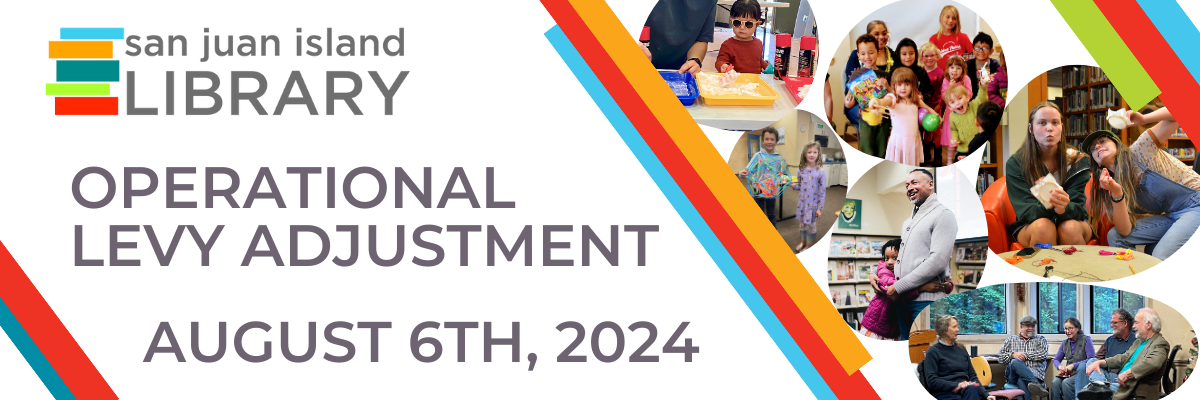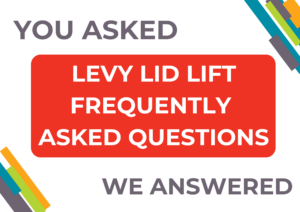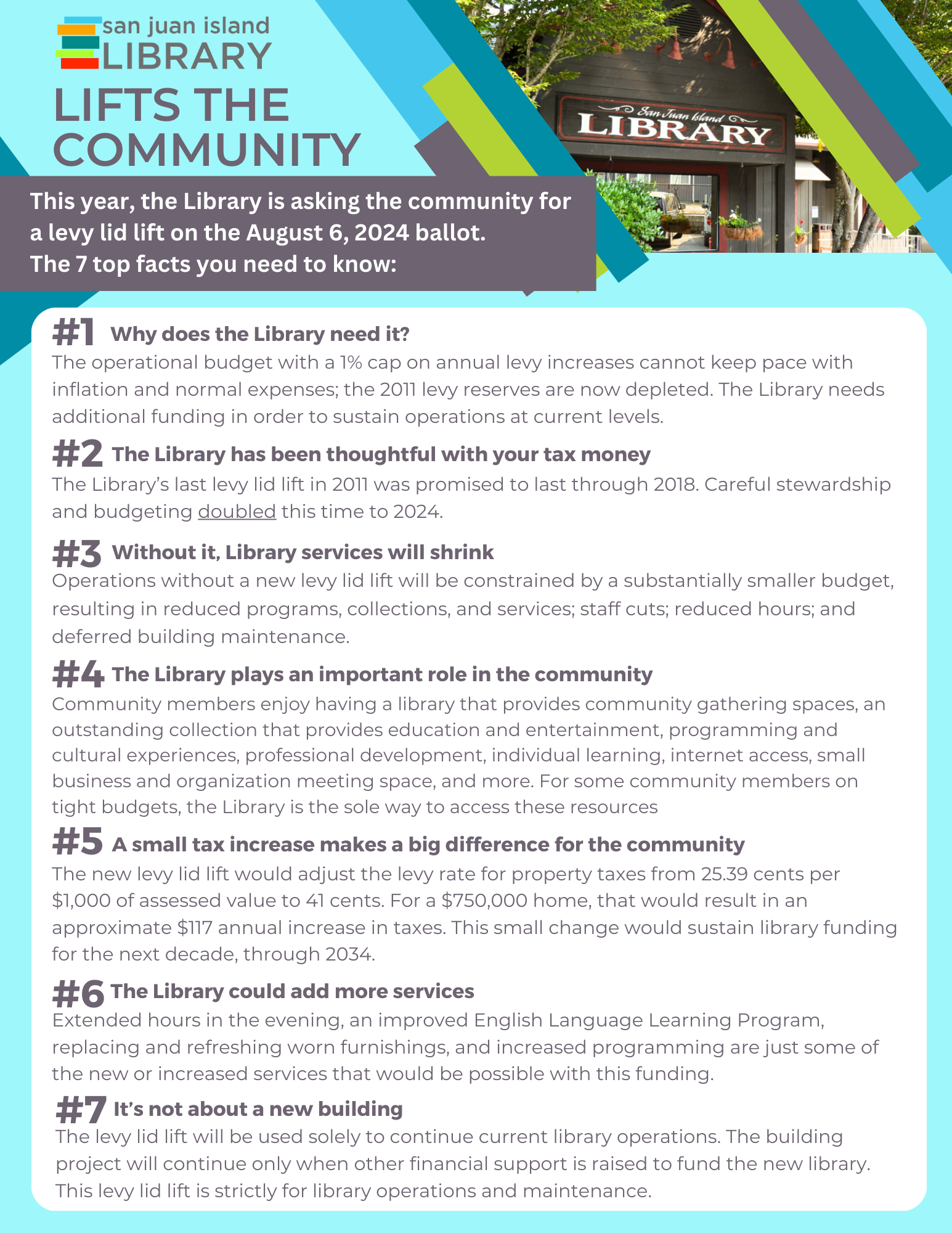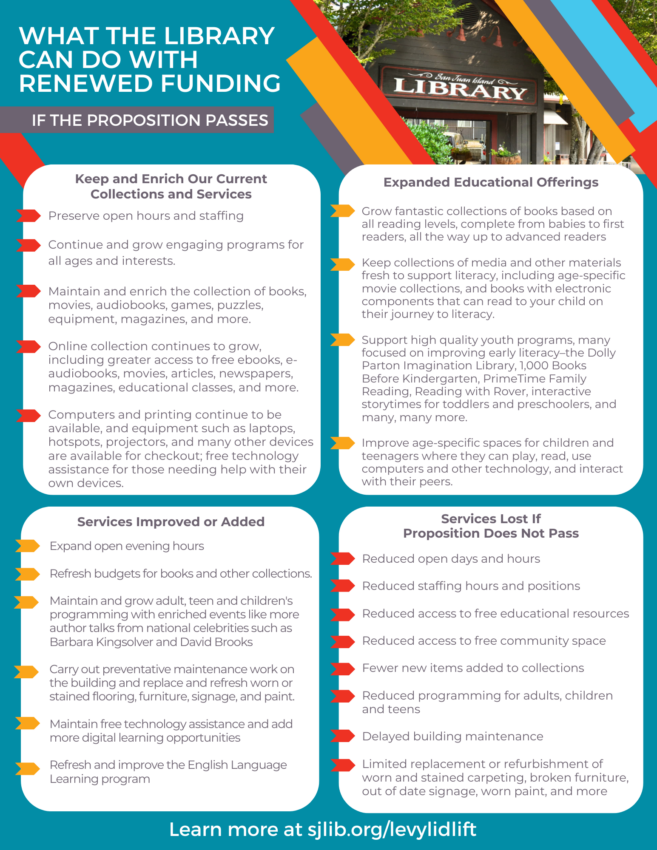
The Library is asking the community for a levy lid lift on the August 6, 2024 ballot. The Library has been frugal and strategic with its last levy lid lift reserves and annual funding but needs to ask for a new levy lid lift in order to sustain the current level of library services, programs, and collections. This is needed money to fund the Library’s operations, not a new library building, and this initiative would need a simple majority to pass.
Levy Budget Narrative With Budget Projections
The Library has held two community meetings to provide greater detail and to answer questions. Please see the recordings and the information below for greater detail.



